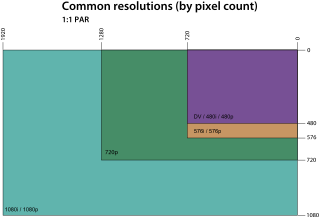1080 was a leap year of the Julian calendar.
1080 may also refer to:
1080 was a leap year of the Julian calendar.
1080 may also refer to:

Tetris Attack, also known as Panel de Pon in Japan, is a puzzle video game developed by Intelligent Systems and published by Nintendo for the Super Nintendo Entertainment System. A Game Boy version was released a year later. In the game, the player must arrange matching colored blocks in vertical or horizontal rows to clear them. The blocks steadily rise towards the top of the playfield, with new blocks being added at the bottom. Several gameplay modes are present, including a time attack and multiplayer mode.

Tony Hawk's Pro Skater, released as Tony Hawk's Skateboarding in the UK, Australia, New Zealand, and parts of Europe, is a 1999 skateboarding video game developed by Neversoft and published by Activision. It was released for the PlayStation on September 29, 1999 and was later ported to the Nintendo 64, Game Boy Color, Dreamcast, and N-Gage.

The display resolution or display modes of a digital television, computer monitor, or other display device is the number of distinct pixels in each dimension that can be displayed. It can be an ambiguous term especially as the displayed resolution is controlled by different factors in cathode ray tube (CRT) displays, flat-panel displays and projection displays using fixed picture-element (pixel) arrays.

Pokémon Puzzle League is a puzzle video game in the Puzzle League series developed by Nintendo Software Technology and published by Nintendo for the Nintendo 64. Released in North America on September 25, 2000, and in Europe on March 2, 2001, its Puzzle League-based gameplay has a focus on puzzle-based strategy in the game's grid-based format. To advance to new levels, players are required to combat the game's trainers and gym leaders, similar to the ones featured in Pokémon Red, Blue, and Yellow. One of several games based on the Pokémon anime, it features lead protagonist Ash Ketchum, his Pikachu, his companions Brock and Misty, the Kanto Gym Leaders, and other characters from the series.

Tony Hawk's Pro Skater 2 is a 2000 skateboarding video game developed by Neversoft and published by Activision. It is the second installment in the Tony Hawk's series of sports games and was released for the PlayStation in 2000, with subsequent ports to Microsoft Windows, Game Boy Color, and Dreamcast the same year. In 2001, the game was ported to the Mac OS, Game Boy Advance, Nintendo 64, and Xbox. The game was later ported to Windows Mobile and Windows Phone devices in 2006 and to iOS devices in 2010.

1080° Snowboarding is a snowboarding video game developed and published by Nintendo for the Nintendo 64 in 1998. In the game, the player controls one of five snowboarders from a third-person perspective, using a combination of buttons to jump and perform tricks over eight levels.
1080i is a combination of frame resolution and scan type. 1080i is used in high-definition television (HDTV) and high-definition video. The number "1080" refers to the number of horizontal lines on the screen. The "i" is an abbreviation for "interlaced"; this indicates that only the even lines of each frame, then only the odd lines, are drawn alternately, so that only half the number of lines are ever updated at once. A related display resolution is 1080p, which also has 1080 lines of resolution; the "p" refers to progressive scan, which indicates that each full frame appears on the screen in sequence.

480i is the video mode used for standard-definition digital video in the Caribbean, Japan, South Korea, Taiwan, Philippines, Myanmar, Western Sahara, and most of the Americas. The other common standard definition digital standard, used in the rest of the world, is 576i.

Tetris & Dr. Mario is a 1994 puzzle video game compilation published by Nintendo for the Super Nintendo Entertainment System. It contains enhanced remakes of Tetris (1989) and Dr. Mario (1990), which were originally released for both the Nintendo Entertainment System and Game Boy in North America. Both games include split-screen multiplayer and a "Mixed Match" mode that transitions between the two games.
High-definition video is video of higher resolution and quality than standard-definition. While there is no standardized meaning for high-definition, generally any video image with considerably more than 480 vertical scan lines or 576 vertical lines (Europe) is considered high-definition. 480 scan lines is generally the minimum even though the majority of systems greatly exceed that. Images of standard resolution captured at rates faster than normal, by a high-speed camera may be considered high-definition in some contexts. Some television series shot on high-definition video are made to look as if they have been shot on film, a technique which is often known as filmizing.

1080p is a set of HDTV high-definition video modes characterized by 1,920 pixels displayed across the screen horizontally and 1,080 pixels down the screen vertically; the p stands for progressive scan, i.e. non-interlaced. The term usually assumes a widescreen aspect ratio of 16:9, implying a resolution of 2.1 megapixels. It is often marketed as Full HD or FHD, to contrast 1080p with 720p resolution screens. Although 1080p is sometimes referred to as 2K resolution, other sources differentiate between 1080p and (true) 2K resolution.
Low-definition television (LDTV) refers to TV systems that have a lower screen resolution than standard-definition television systems. The term is usually used in reference to digital television, in particular when broadcasting at the same resolution as low-definition analog television systems. Mobile DTV systems usually transmit in low definition, as do all slow-scan television systems.

Disney Sports Skateboarding is a pair of 2002 sports video games released by Konami, one for the GameCube, and the other for the Game Boy Advance.

A display resolution standard is a commonly used width and height dimension of an electronic visual display device, measured in pixels. This information is used for electronic devices such as a computer monitor. Certain combinations of width and height are standardized and typically given a name and an initialism which is descriptive of its dimensions.

The Nintendo eShop is a digital distribution service for the Nintendo Switch, and formerly available via the Nintendo Network for the Wii U and Nintendo 3DS. The Nintendo eShop was first launched in June 2011 on the Nintendo 3DS via a system update that added the functionality to the HOME Menu. It is the successor to both the Wii Shop Channel and DSi Shop. Unlike on the Nintendo 3DS, the eShop was made available on the launch date of the Wii U, although a system update is required in order to access it. It is also a multitasking application, which means it is easily accessible even when a game is already running in the background through the system software, though this feature is exclusive to the Wii U and the Nintendo Switch. The Nintendo eShop features downloadable games, demos, applications, streaming videos, consumer rating feedback, and other information on upcoming game releases.
The 1080 is a skateboarding trick that can be performed on a vertical skateboard ramp or on a mega ramp, in which the skateboarder makes three full revolutions while airborne. It was first completed successfully on a mega ramp in 2012 by American skateboarder Tom Schaar, and on a vert ramp in May 2020 by Brazilian skateboarder Gui Khury. The 1080 has only ever been landed after a fakie ollie, meaning the rider is in the normal stance, but rolling in the opposite direction, popping off of the tail.

Skate or Die: Bad 'N Rad is a 2D action video game developed and published by Konami for the Nintendo Game Boy. A part of the Skate or Die series created by Electronic Arts, the game was released in North America in September 1990 and in Europe in June 1991.

Mario & Sonic at the Olympic Games Tokyo 2020 is a 2019 sports video game based on the 2020 Summer Olympics. It is the sixth game in the Mario & Sonic series, a crossover between Nintendo's Super Mario and Sega's Sonic the Hedgehog franchises, and the first since the Rio 2016 Olympic Games edition. It was developed and published by Sega for the Nintendo Switch in November 2019 and for arcade cabinets in 2020.

Tony Hawk's Pro Skater 1 + 2 is a 2020 skateboarding video game developed by Vicarious Visions and published by Activision. It was released for PlayStation 4, Windows, and Xbox One on September 4, 2020, PlayStation 5 and Xbox Series X/S on March 26, 2021, and Nintendo Switch on June 25 of the same year. It is a remake of the first two games in the Tony Hawk's series: Tony Hawk's Pro Skater (1999) and Tony Hawk's Pro Skater 2 (2000), which were originally developed by Neversoft. It is the first major console game in the series since Tony Hawk's Pro Skater 5 (2015) and is Vicarious Visions' final work as a subsidiary of Activision before it was merged into Blizzard Entertainment on January 22, 2021.